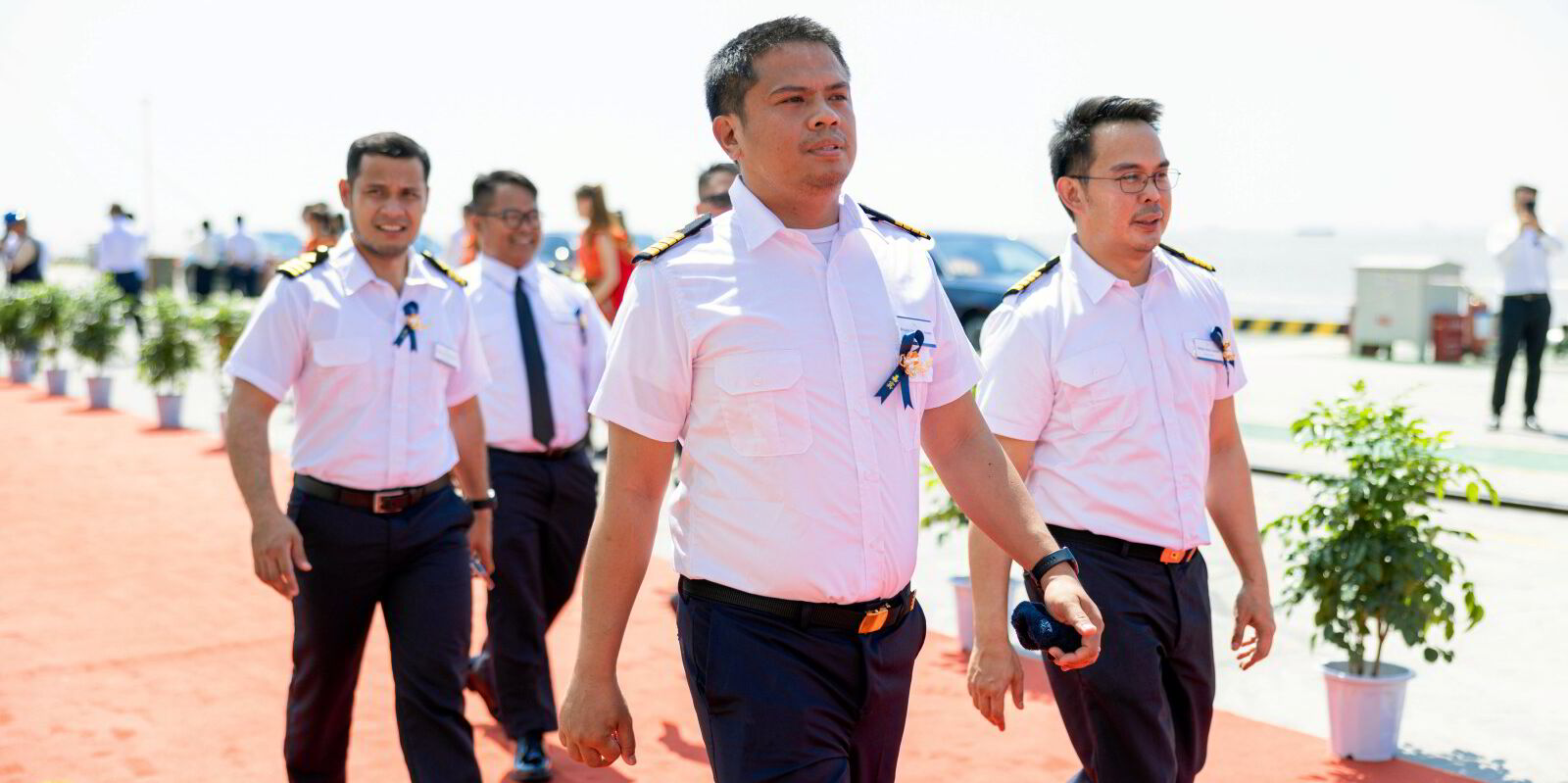Norway’s Hoegh Autoliners has taken advantage of the gas competence in sister company Hoegh LNG to train its crew for a new fleet of LNG-fuelled car carriers.
Hoegh Autoliners chief operating officer Sebjorn Dahl said with 12 new vessels set to come onto the water over the next three years, the company has been sending car carrier crews to Hoegh LNG to gain the gas experience and certification they need.
“We carefully selected the crew from our existing pool of seafarers, but they do not have gas certificates,” Dahl explained from on board the 9,100-ceu Hoegh Aurora (built 2024), the first of its vessels to be delivered.
“They have done plenty of theory, practical and familiarisation, but for the officers, all the officers, they need one month practice on board, so they have been on board a Hoegh LNG vessel for one month,” he explained in an interview with TradeWinds.
“So, a big thank you to Hoegh LNG, as it would have been difficult to educate our seafarers to run these vessels without their help”.
While the first eight vessels will be delivered running on LNG or diesel, Hoegh Autoliners has made a big play of its plans to use ammonia in the future.
It hopes that MAN ES will have the designs for its dual-fuel ammonia engines ready by the time construction begins on the ninth vessel.
“When it comes to ammonia, we have hooked up with the Yara,” Dahl said. Yara International is the Norwegian fertiliser giant building up its capabilities to produce green and blue ammonia with a new specialised unit, Yara Clean Ammonia.
Last year, Yara and Hoegh Autoliners announced a partnership to supply ammonia to the shipowner’s new car carriers after 2027.
“Yara has 100 years of experience in ammonia production and ammonia is toxic, so that is something we take extremely seriously,” Dahl said.
Hoegh will cherry-pick officers and crew from the first Aurora-class vessels and put them through ammonia bunker training, even if there are still no defined training courses for crews on board ammonia-fuelled vessels.
“We will hook up with the experts and train them well,” Dahl said, adding that the company will take a belt-and-braces approach to safety.
“If one gas sniffer and two safety belts are required, we will buy the double to be sure, and most probably do something with the crew. We are discussing the creation of an ammonia safety officer role on board, to implement so much safety so we can feel safe. We will never compromise on crew safety. Never.”
The Aurora-class vessels are all being built with a single 3,400-cbm type C fuel bi-lobe gas fuel tank. These are large units being 40.5 metres high, more than 13 metres long and 8 metres in width, excluding the insulation, cutting up through at least four car decks midships of the vessel.

These are multifuel tanks, capable of holding ammonia, methanol or LNG, which, with the fuel supply system, are more expensive than the LNG dual-fuel engine.
“We have built in everything we can build in, and we have paid for as much as we can pay for to make it ammonia ready,” Dahl said of the first eight ships in the 12-strong orderbook.
“So it’s relatively easy to convert this vessel to run on ammonia; we don’t have to change tanks. It’s just some modification of the engines, the top injectors, some safety features and some piping,” he said.
The conversions will likely take place when these vessels reach their first special surveys after five years, so between 2029 and 2031.



